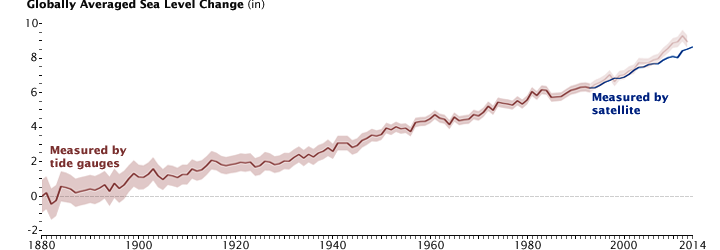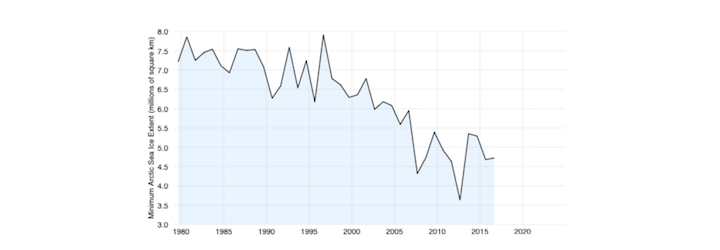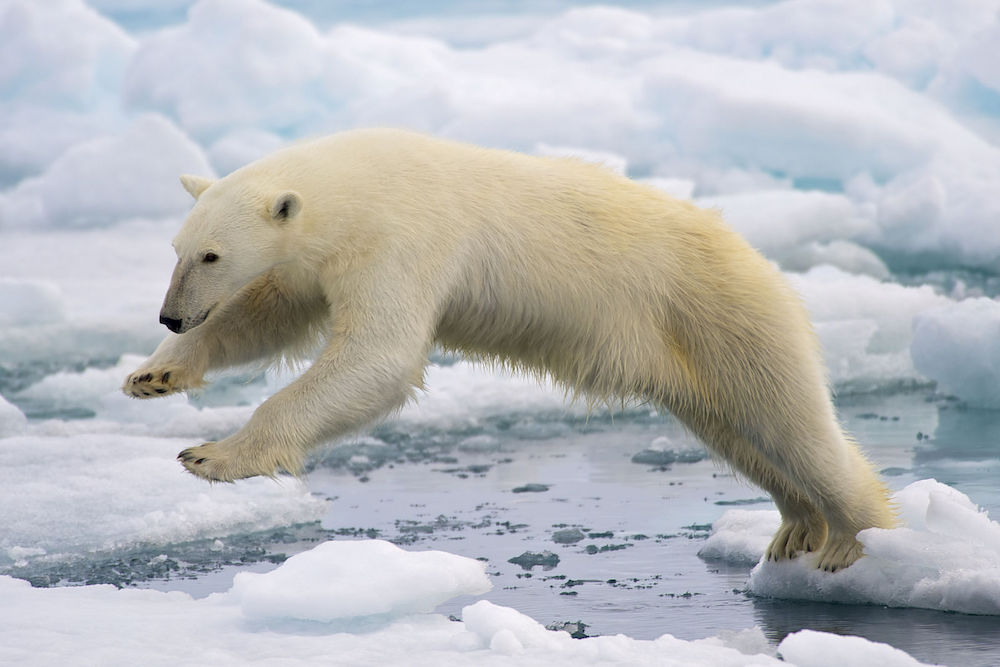Climate change and its effects on aquatic animals
This article was written for Get Involved Palo Alto's Spring 2017 “Hack for Social Good” as part of Global Youth Service Day. Get Involved Palo Alto is a local 501C3 non-profit dedicated to “empowering students to pursue purposeful pathways.”
Climate change is real.
Even though the Earth undergoes natural warming and cooling cycles, current climate-warming trends can not be solely explained without taking human influence into account.
Proof from our oceans:
Since 1870, global sea levels have risen eight inches (source: NASA). Since 1979, Arctic sea ice has decreased by an average of ~12% per average (source: National Snow and Ice Data Center). Ocean temperatures increased by 1.53 F (0.85 C) between 1880 and 2012 (source: IPCC 2013) If climate change were not real, then sea levels would not be rising, Arctic sea ice would not be disappearing, and ocean temperatures would not be increasing.

A graph from NASA showing sea level rise.

A graph from NSIDC showing sea ice decrease.
Other proof:
According to NASA, “The planet's average surface temperature has risen about 2.0 degrees Fahrenheit (1.1 degrees Celsius) since the late 19th century, a change driven largely by increased carbon dioxide and other human-made emissions into the atmosphere.” In addition, glaciers and ice sheets have been retreating over the last century.
Climate change hurts fish (and other aquatic animals).
While it is common knowledge that climate change is bad for us humans, this article (that is posted on a fish website) will focus on its impacts on fish and other aquatic animals.
Temperature change
Most species are adapted to certain environmental conditions. As water temperature changes, these species suffer. For example, an increase in ocean temperature has been linked with coral bleaching. According to NOAA, “the U.S. lost half of its coral reefs in the Caribbean in [2005] due to a massive bleaching event” caused by warm water.

A bleached coral.
[Photo courtesy ”Acropora“/Wikipedia — CC 3.0]
Unpredictable weather
Global warming has made heavy storms more common. These storms can harm coastal ecosystems, destroying aquatic animals along with their habitats.
Rising sea levels
Rising sea levels destroy wetlands and other coastal breeding grounds of fish. As sea levels rise, these habitats will become fully submerged and their inhabitants will die.
Ocean acidification
Carbon dioxide (CO2) reacts with water (H2O) to form carbonic acid (H2CO3) in the following reaction: CO2 + H2O ⇌ H2CO3
Because carbonic acid is acidic, it increases the acidity (decreases the pH) of the ocean.
Acidic H+ ions and HCO3- are then produced from the dissolution of carbonic acid: H2CO3 ⇌ H+ + HCO3-
Those H+ ions are then neutralized by carbonate (CO32-): H+ + CO32- ⇌ HCO3-
In summary, carbon dioxide (a greenhouse gas) forms carbonic acid which then produces hydrogen ions that react with carbonate. An increase in carbon dioxide results in a decrease in the levels of carbonate in our oceans.
Part of calcium carbonate (CaCO3), carbonate is a crucial for the formation of the shells of marine snails and other organisms with shells. Their shells will dissolve faster as more carbon dioxide is added to our oceans.
Invasive species
Invasive species prey on native species, out-compete them for food or other resources, and by alter entire food webs/ecosystems. Higher average temperatures, as well as changes in weather patterns caused by global warming, can enable the spread of invasive species. For example, an increase in water temperature could favor invasive species that thrive in warmer waters. This could help them outcompete native species that are adapted to colder waters.
Melting ice
Global warming causes the loss of sea ice, a habitat of polar bears (Ursus maritimus). According to the National Wildlife Federation, “the polar bear was listed as a threatened species under the Endangered Species Act primarily because of the decline of its primary habitat: sea ice. [...] the polar bear's future is still very much in jeopardy.”

A polar bear.
[Photo courtesy Arturo de Frias Marques/Wikipedia — CC 4.0]
Positive feedback loops.
If two cell phones that are calling each other get too close, feedback occurs. The sound (output) of the first phone increases the input (and then the output) of the second phone. This leads to an increased input for the first phone and a cycle of positive feedback. Likewise, climate change has its own positive feedback cycles as well—climate change leads to more climate change. Here are two positive feedback loops that prove just how important it is that we address climate change:
Surface albedo
Ice has a higher “surface albedo” than water, so it reflects more sunlight. This reflection of sunlight back into space helps keep the Earth cool. When global warming causes sea ice to melt, the reflective capacity of our oceans is decreased, resulting in more heating and more loss of ice. The more global warming occurs, the more ice that we lose and the more ice that we lose, the faster global warming occurs.
Thawing permafrost
Permafrost is frozen soil. As our Earth heats up, permafrost melts. The carbon and methane stored in permafrost are then released into the atmosphere, furthering the greenhouse effect. These gases prevent reflected light from escaping back into space. Without greenhouse gases, our planet would be too cold and too barren to support life as we know it today. However, human activities and the thawing of permafrost (which can be attributed to climate change) have increased greenhouse gases to levels at which they are in excess.
You can #GetInvolved.
Climate change is a serious issue that affects animals, the environment, and ourselves. It is real; it is harmful; it is a vicious cycle. Looking for ways to help out? Here's how:
- Read our Earth Day article to discover more environmental tips!
- Contact your political representatives and urge them to take action that keeps our planet's future in mind.
- Donate to a climate change charity.
- Visit Get Involved Palo Alto's service opportunity calendar to find local service events.
- Share this article on social media to promote awareness.
For a deeper exploration into fishkeeping, visit AquariumKids.com and connect with us on Facebook (facebook.com/aquariumkids), Google+ (google.com/+aquariumkids), Instagram (instagram.com/aquariumkids), Tumblr (aquariumkids.tumblr.com), and Twitter (twitter.com/aquariumkids)! Feel free to contact me at evanb [at] aquariumkids [dot] com with any questions.
Thanks for reading this article on climate change (published 4/22/17)! For more information, please browse around AquariumKids.com! Feel free to contact me at evanb [at] aquariumkids [dot] com with any questions.
What are your thoughts on climate change? What have you done to protect our planet? Let's start a discussion in the comments section below:
